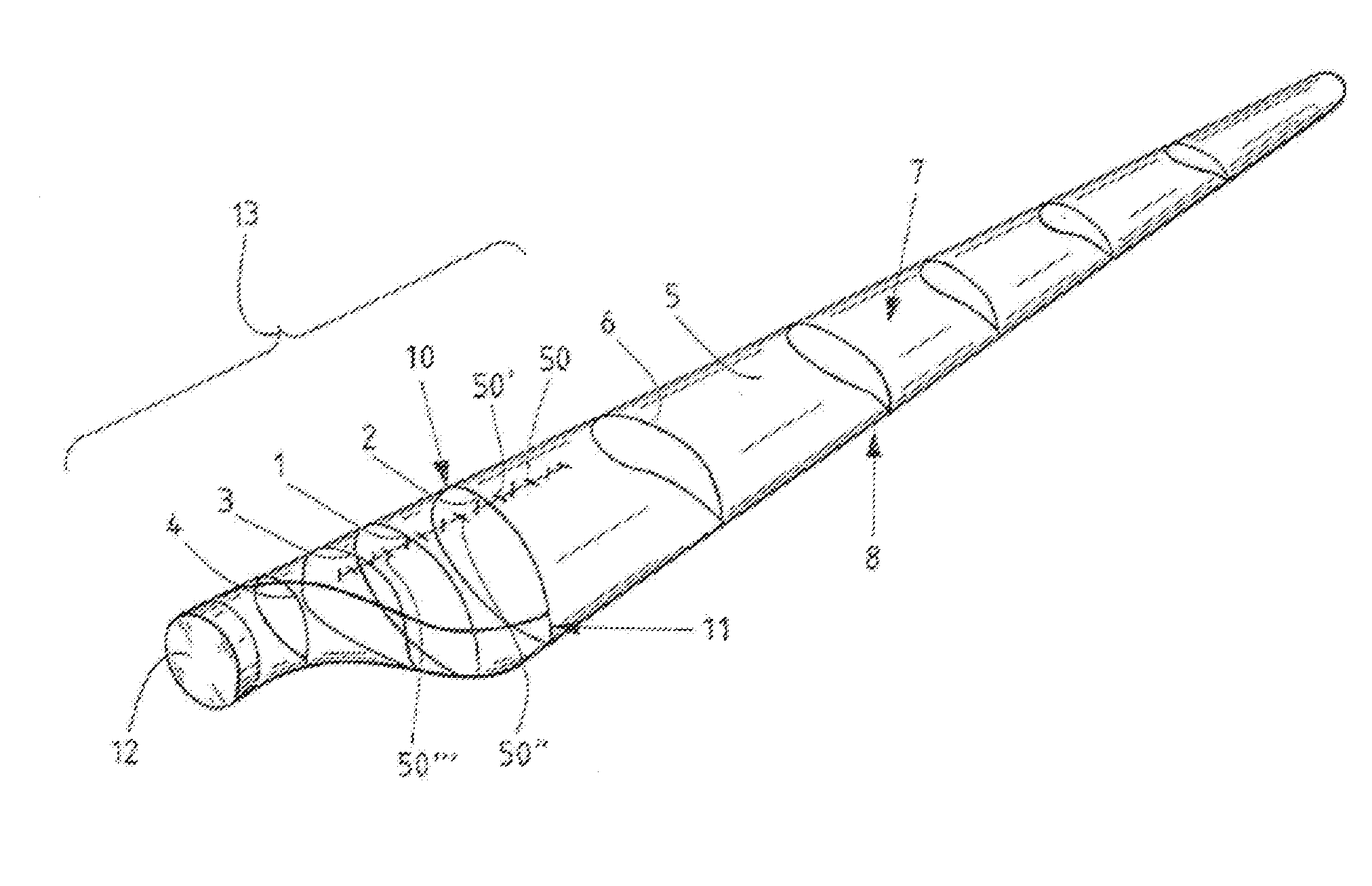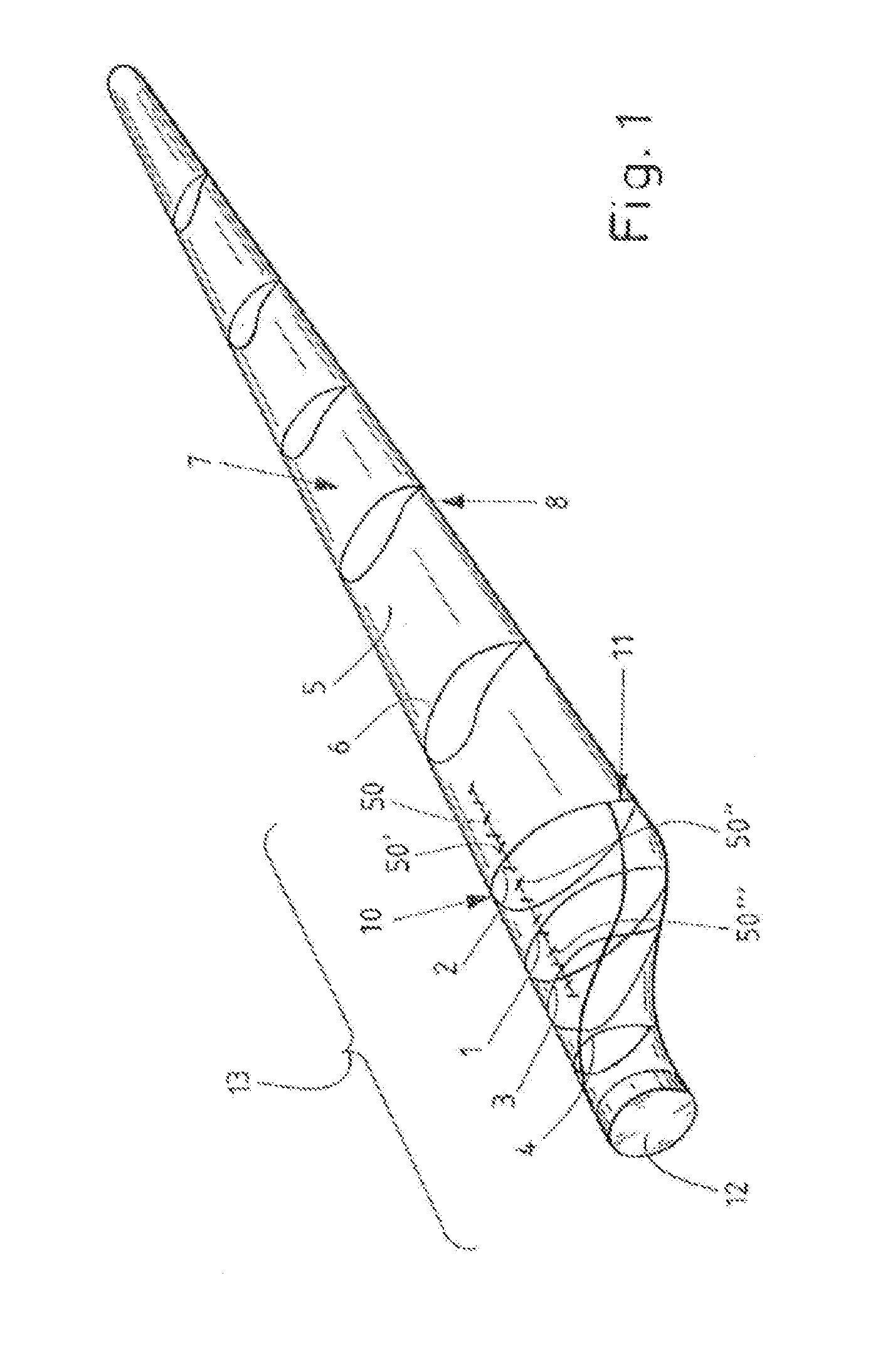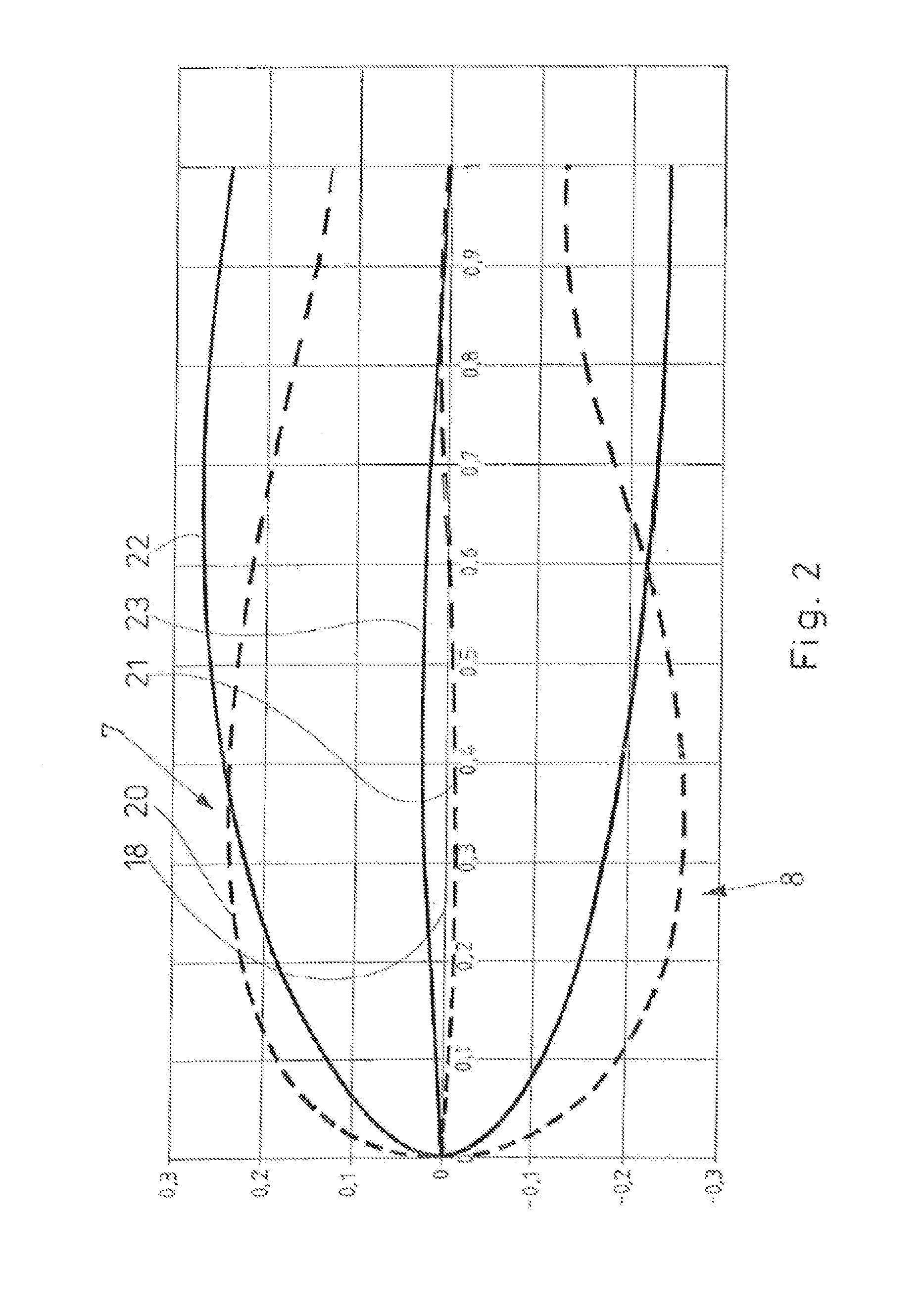Rotor blade of a wind turbine
- Summary
- Abstract
- Description
- Claims
- Application Information
AI Technical Summary
Benefits of technology
Problems solved by technology
Method used
Image
Examples
Embodiment Construction
[0068]Shown schematically in FIG. 1 is a rotor blade 5 of a wind turbine, the latter not being represented, wherein some profiles 1-4 and 6 have already been drawn in.
[0069]Profiles 1-4 are provided in a transition region 13 in the proximity of a rotor-blade root 12. The transition region 13 may be distinguished in that, for example, the trailing edge 11 no longer tapers, as in the case of the other profiles 6, but is blunt in form, for example becoming ever more blunt, the closer the profiles are to the rotor-blade root 12. To aid illustration, the leading edge 10 is also indicated, as well as an upper side, or suction side 7, and an underside, or pressure side 8. Of particular interest in the context of the invention are the profiles 1-4, which are located in the transition region 13, as well as additionally provided vortex generators 50, 50′, 50″ and 50′″. These profiles 1-4 are now to be explained in the following.
[0070]FIG. 2 shows a profile of a rotor blade 5 according to the ...
PUM
 Login to View More
Login to View More Abstract
Description
Claims
Application Information
 Login to View More
Login to View More - R&D
- Intellectual Property
- Life Sciences
- Materials
- Tech Scout
- Unparalleled Data Quality
- Higher Quality Content
- 60% Fewer Hallucinations
Browse by: Latest US Patents, China's latest patents, Technical Efficacy Thesaurus, Application Domain, Technology Topic, Popular Technical Reports.
© 2025 PatSnap. All rights reserved.Legal|Privacy policy|Modern Slavery Act Transparency Statement|Sitemap|About US| Contact US: help@patsnap.com



